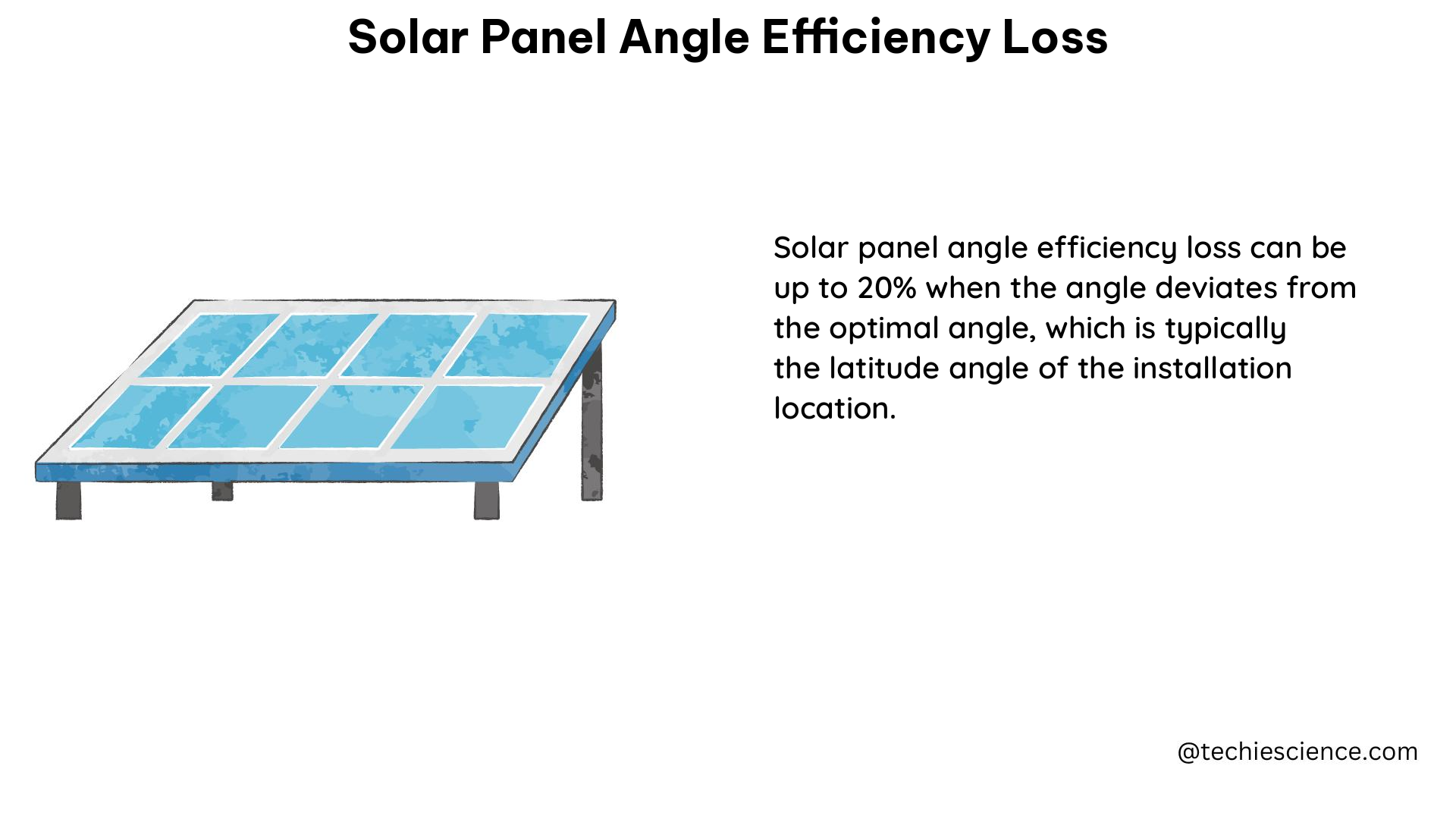Solar panels are a crucial component of renewable energy systems, converting sunlight into clean, sustainable electricity. However, the efficiency of solar panels can be significantly impacted by the angle at which they are positioned relative to the sun. This phenomenon, known as solar panel angle efficiency loss, is a crucial factor to consider when designing and optimizing solar energy systems.
Understanding Solar Panel Angle Efficiency Loss
The efficiency of a solar panel is directly related to the amount of sunlight that falls on its surface. When the panel is not positioned perpendicular to the sun’s rays, the effective surface area exposed to the sun decreases, leading to a reduction in power output. This loss in efficiency can be quantified by measuring the power output of the solar panel at different angles relative to the sun’s position.
Factors Affecting Solar Panel Angle Efficiency Loss
Several factors contribute to the solar panel angle efficiency loss, including:
-
Latitude and Seasonal Variations: The optimal tilt angle for a solar panel varies depending on the latitude of the installation site and the time of year. In general, the tilt angle should be adjusted to match the sun’s altitude angle, which changes throughout the year.
-
Sun’s Altitude and Azimuth Angles: The sun’s altitude angle (the angle between the sun and the horizon) and azimuth angle (the angle between the sun and true north) also play a significant role in determining the optimal tilt angle for a solar panel.
-
Panel Orientation: The orientation of the solar panel, whether it is facing true south (in the Northern Hemisphere) or true north (in the Southern Hemisphere), can also impact the angle efficiency loss.
-
Panel Type and Technology: Different types of solar panels, such as monocrystalline, polycrystalline, or thin-film, may have varying sensitivities to angle-induced losses.
Quantifying Solar Panel Angle Efficiency Loss
To quantify the solar panel angle efficiency loss, researchers and solar energy professionals often conduct experiments and studies. One such study, “Effect of tilt angle on the performance and electrical parameters of a PV module: Comparative indoor and outdoor experimental investigation,” provides valuable insights.
The study compared the performance of a photovoltaic (PV) module under indoor and outdoor conditions, focusing on the impact of tilt angle on the module’s electrical parameters and overall efficiency. The researchers found that the optimal tilt angle for the PV module could significantly enhance its electrical parameters and overall efficiency.
Another study, “A New Angle on Photovoltaic Solar Panel Efficiency,” involved students conducting experiments to understand the relationship between the angle of a PV panel and its power output. By varying the angle of the solar panel and measuring the resulting current output, the students observed the direct correlation between the panel’s angle and its efficiency.
Mitigating Solar Panel Angle Efficiency Loss

To mitigate the impact of solar panel angle efficiency loss, several strategies can be employed:
-
Adjustable Mounting Systems: Utilizing solar panel mounting systems that can be adjusted to track the sun’s position throughout the day and across different seasons can help maximize the panel’s exposure to sunlight and minimize angle-induced losses.
-
Optimal Tilt Angle Calculation: Calculating the optimal tilt angle for a specific location and time of year can help ensure that the solar panels are positioned to receive the maximum amount of sunlight, thereby minimizing angle-induced losses.
-
Automated Tracking Systems: Implementing automated tracking systems that continuously adjust the panel’s orientation to follow the sun’s movement can significantly improve the overall energy production and efficiency of the solar energy system.
-
Panel Orientation Optimization: Carefully considering the orientation of the solar panels, whether facing true south (in the Northern Hemisphere) or true north (in the Southern Hemisphere), can help minimize angle-induced losses and maximize energy production.
-
Panel Type Selection: Choosing solar panel technologies that are less sensitive to angle-induced losses, such as certain thin-film or bifacial panel designs, can help mitigate the impact of solar panel angle efficiency loss.
Conclusion
Solar panel angle efficiency loss is a critical factor to consider when designing and optimizing solar energy systems. By understanding the factors that contribute to this phenomenon and implementing strategies to mitigate its impact, solar energy professionals and DIY enthusiasts can maximize the efficiency and energy production of their solar installations.
Reference:
– Effect of tilt angle on the performance and electrical parameters of a PV module: Comparative indoor and outdoor experimental investigation
– A New Angle on Photovoltaic Solar Panel Efficiency
– Solar Performance and Efficiency
– How is Solar Panel Efficiency Measured?

The lambdageeks.com Core SME Team is a group of experienced subject matter experts from diverse scientific and technical fields including Physics, Chemistry, Technology,Electronics & Electrical Engineering, Automotive, Mechanical Engineering. Our team collaborates to create high-quality, well-researched articles on a wide range of science and technology topics for the lambdageeks.com website.
All Our Senior SME are having more than 7 Years of experience in the respective fields . They are either Working Industry Professionals or assocaited With different Universities. Refer Our Authors Page to get to know About our Core SMEs.